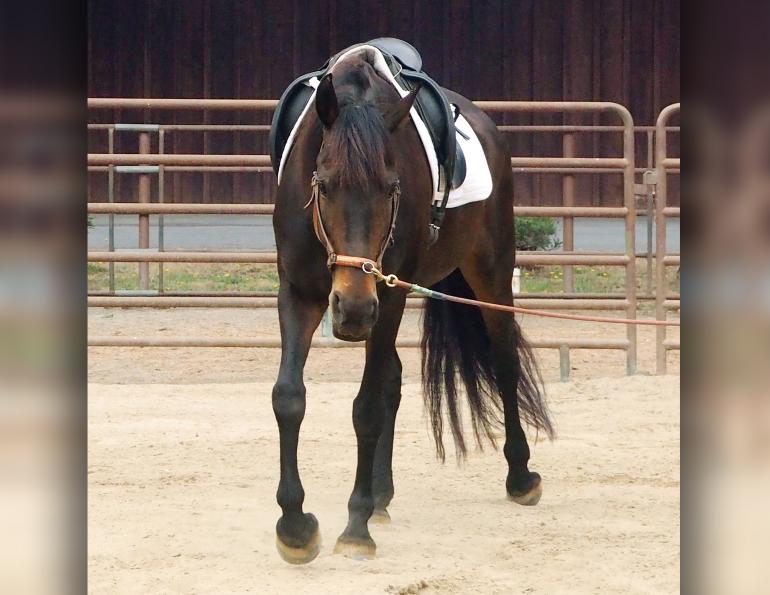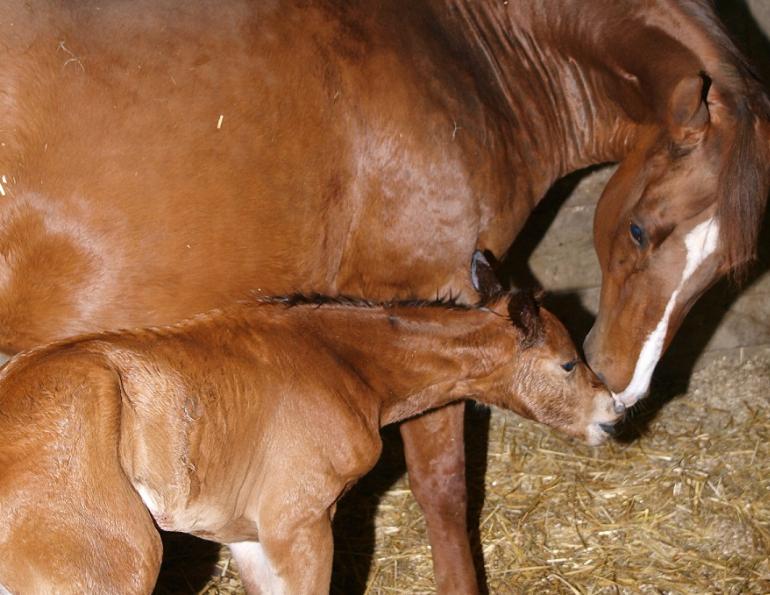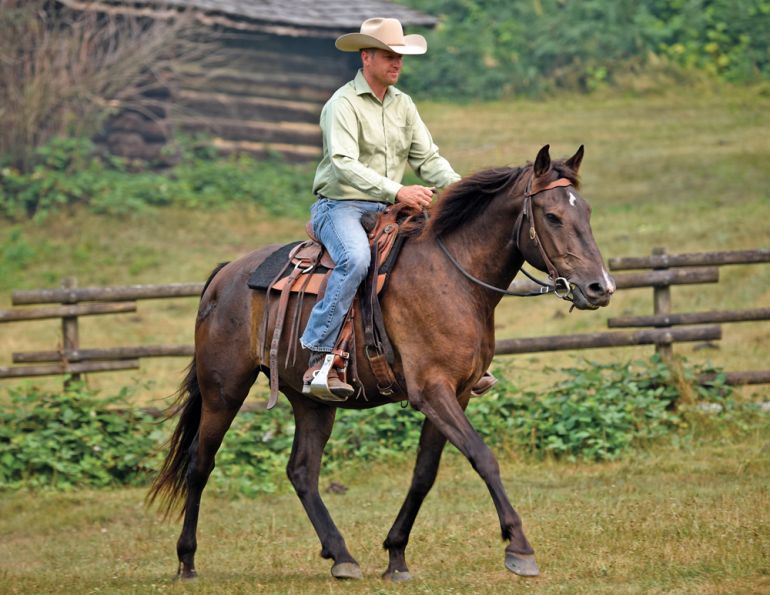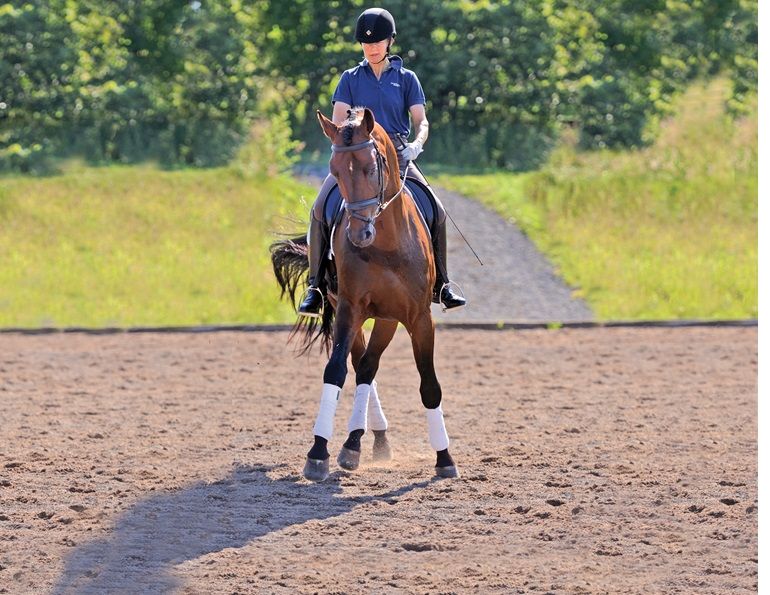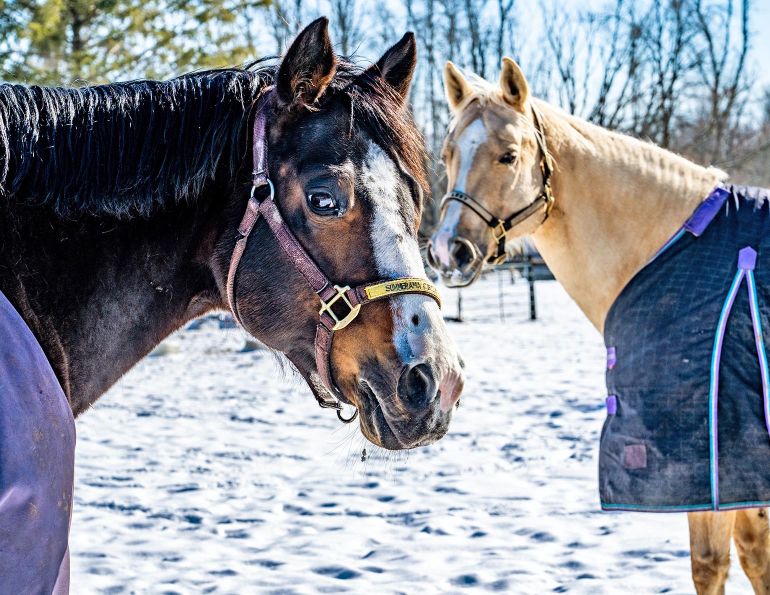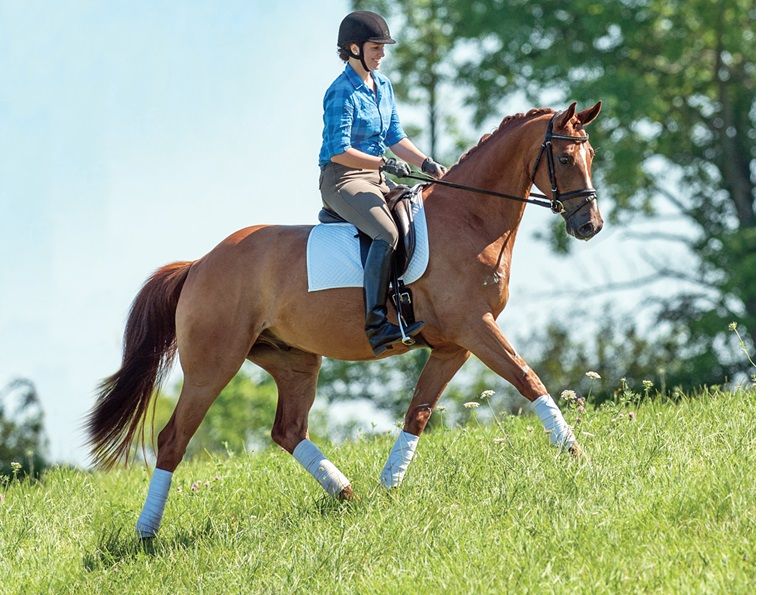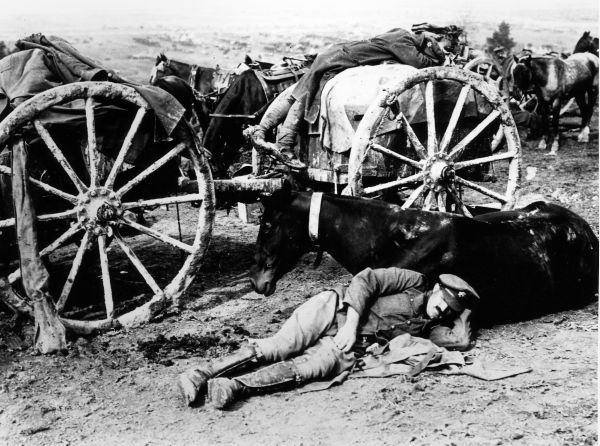An Essential Tool for Groundwork
By Jec A. Ballou
Due to its effectiveness in helping the horse carry his body with good form, the longe cavesson is arguably one of the most useful pieces of equipment to own, yet only a surprisingly small number of riders know about it. While early depictions from the 16th century refer mostly to its value in lateral poll flexion, its benefits for groundwork extend to a horse’s entire body. For anyone who performs groundwork it is an indispensable tool, as I will explain.
Common misalignments of horses during groundwork include a twisted poll that comes from a handler using a line attached under the chin, or one-sided pressure on the bit when using a bridle. The alignment and state of positive — or negative — tension in the poll directly affects the rest of the body. Within the poll region is a vast bundle of nerves that, through a network extending down into the body and limbs, coordinates signals throughout the entire musculoskeletal system. When there is stiffness or crookedness in the horse’s poll, it will be mirrored in the musculature of his trunk. Without proper posture, groundwork training can deepen muscular imbalances.
Related: Round Pens - Training for Good Posture or Bad?
Because a cavesson allows the handler to position the horse’s head and poll from an attachment point over the bridge of his nose, it does not twist or tilt his head sideways when asking his spine to bend from ears to tail. Instead, it gently swivels the head laterally at the poll junction. This way, it helps loosen that junction while keeping it aligned correctly. As the horse flexes his poll, he can then align his trunk, and his hind legs can step under his body and drive off the ground with equal force. When the poll is misaligned, or tense and braced, his hind legs push with unequal force (see Figure 1).
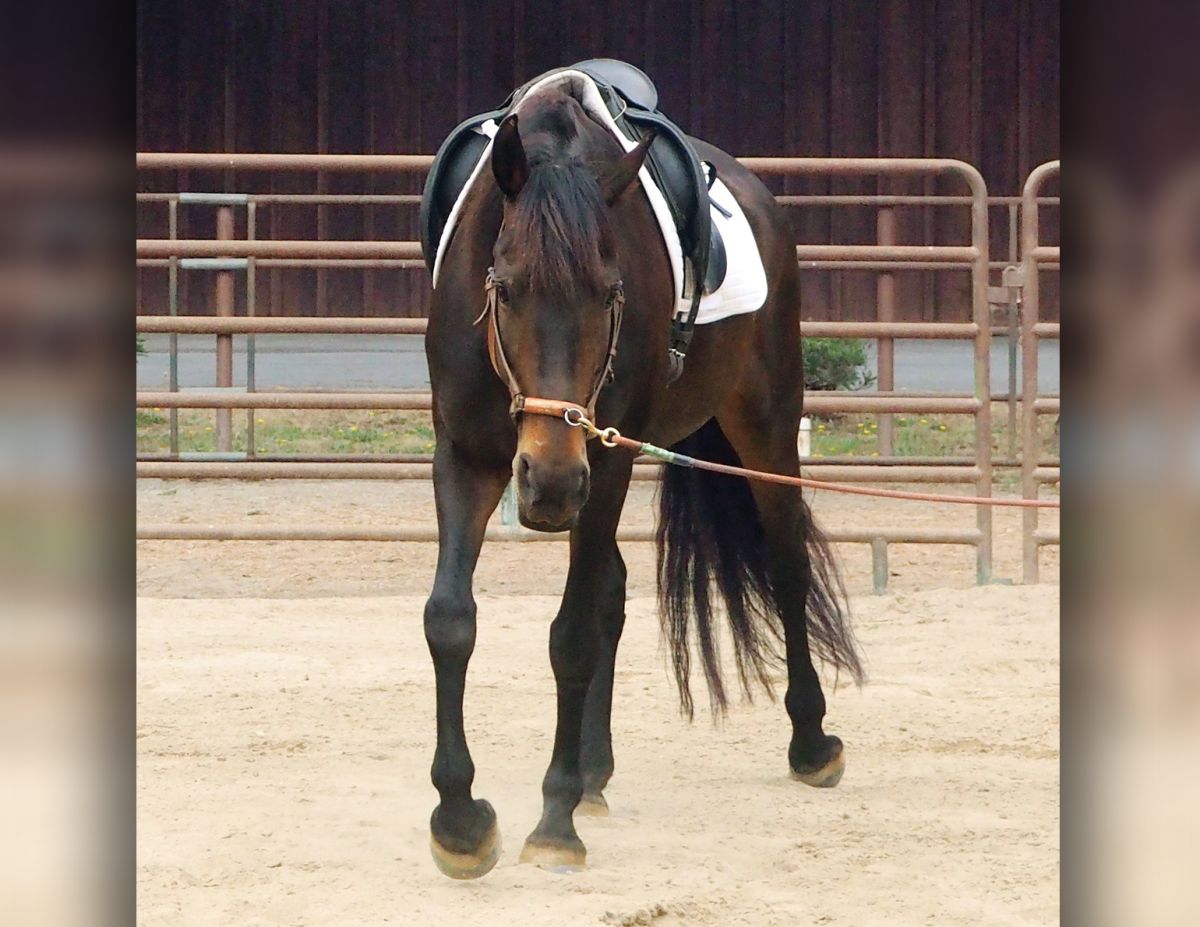
Figure 1. Photo courtesy of Jec Ballou
Dating to at least the 16th century, based on references by Italian dressage trainer Frederico Grisone, the longe cavesson originated as a way to develop lateral flexion without applying pressure to the bars of the horse’s mouth. It avoided hurting the mouth and sidestepped any tension or resistance the horse might have offered in his jaw and neck. It is most typically used for groundwork, although some historical illustrations show a variation of cavessons for early bitless riding of young horses.
The cavesson also improves longitudinal balance by guiding the horse to stretch and lower his neck to round his topline. It accomplishes this by the handler applying light traction on the longe line to draw the horse’s head and neck in the desired posture. If, however, a horse is unable to follow this request, either through fear or physical limitations, the pressure can disappear promptly. It is not fixed or restrictive. Instead, the cavesson helps shape the horse’s body more through suggestion rather than by holding him in a certain position.
A useful longe cavesson should be no thicker or heavier than a basic bridle. It should have a jaw strap positioned well ahead of the throatlatch area (see Figure 2), which stabilizes and prevents the cheek straps from sliding forward near the horse’s eyes. The curved section over the horse’s nose is most commonly made from lightweight steel wrapped in soft leather. Firmness of this piece allows a handler to use small and precise cues with the cavesson.

Figure 2. Photo courtesy of Jec Ballou
If a cavesson is too loose, it does not serve the right purpose. Cavessons exist in a variety of materials, although most are leather. More important than the material is how they fit. The noseband should conform to the shape of the horse’s face, so it is snug without pinching. It needs to fasten around the horse’s nose in a similar position as an English bridle cavesson and not slide too low towards his nostrils. It needs to have a small ring that swivels freely over the center of the nose for attaching the longe line.
The following exercises introduce the use of a longe cavesson to improve how the horse carries and maneuvers his body.
Serpentine In Hand
1. Stand directly in front of your horse’s chest holding your rope in your left hand and a long whip in your right.
2. Begin by walking straight backwards and drawing the horse towards you with light pressure on the rope to invite his head/neck to stretch out and down (see Figure 3A).
3. Now use your whip directed at his ribcage to ask him to bend his body around it (see Figure 3B).
4. Be sure to continue walking backward in a straight line.
5. After three steps, reach across the horse’s body with your whip to the opposite side of his ribcage and ask for a bend in the new direction (see Figure 3C). If you find this maneuver awkward, you can move your whip to your left hand and your rope to the right.
6. After three strides of bending in the new direction and continuing to walk a straight line, ask for a bend again in the original direction.
7. Continue repeating this sequence while maintaining a steady rhythmic walk with your horse.
If the horse stiffens or braces his body rather than bending, he will push forward into you. In this case, use a series of little “bumps” with the cavesson on his nose to interrupt that pattern. Be sure to use the cavesson to change the flexion of the horse’s poll each time you start a new bend. His head should feel like a hinge swiveling.

Photos courtesy of Jec Ballou
Pre-Ride Circles
1. Place a cone in the middle of a six-metre circle.
2. Now proceed to ask your horse to walk the small six-metre circle around this cone, inviting him to stretch his neck towards the ground AND curve inwards towards the circle centre.
3. Maintain a marching, energetic walking rhythm while bending and stretching.
4. Make three to five revolutions of the circle in each direction.
Do not be tempted to skip setting up the cone in the above exercise. Various sizes of circles have been experimented with in rehab programs and six-metres appears to be the size that engages the deep epaxial muscles of the spine, which stabilize the spine. The geometry plays a big role here, which is why I recommend using a cone marker instead of freewheeling.
Related: 9 Best Cavalletti Exercises



